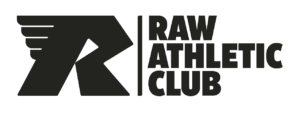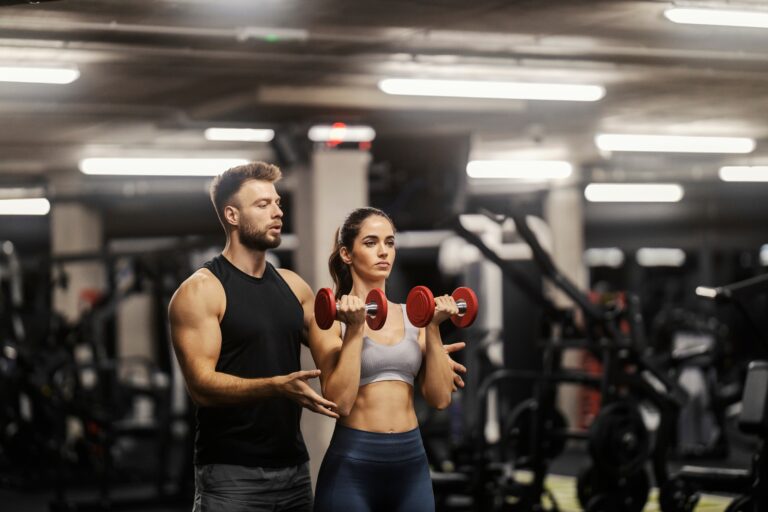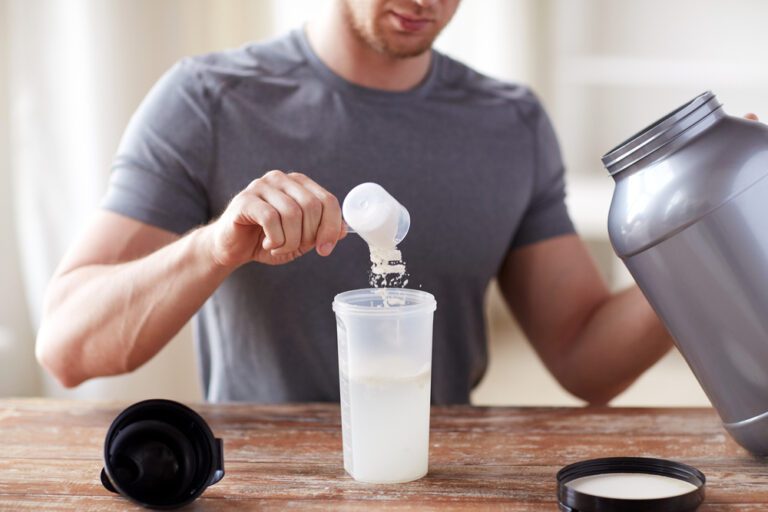The fitness space is flooded with different exercises, training styles, and workout programs. One person will tell you periodization training is the only way. Another swears by high-intensity circuits or CrossFit.
It can be confusing to know what type of exercises are really best. Today, we’re gonna make that decision a little easier for you.
It doesn’t matter if you are looking to train like an Olympic athlete, hope to get in a short lift a few days a week from home, or have hit a plateau and are looking for advanced techniques to boost progress.
There’s one thing most fitness experts and enthusiasts can agree on— full-body exercises are generally superior, no matter your fitness level or goals.
When we say full-body exercises, we’re not talking about full-body workouts. Yes, most full-body workout programs rely heavily on these movements, but full-body exercises should be a staple in any solid training program—whether you’re lifting five days a week or squeezing in two.
You’ve probably guessed that full-body exercises use your entire body. But do you know what that actually means? Is running a full-body exercise? Do push-ups work the full body? Does yoga count? What about squats, pull-ups, or presses?
The answers to what is and isn’t a full-body exercise might surprise you.
In this article, we’ll break it all down— what full-body exercises really are, the best ones to include in your training, the key benefits they offer, and how to know if you should be doing full-body exercises to reach your goals.
What Are Full Body Exercises?
By definition, it might seem obvious what full-body exercises are. They’re single movements that simultaneously work your entire body instead of just one muscle group.
Yes, but there’s more to it…
Unlike isolation exercises (like bicep curls), which target only one muscle at a time, full-body exercises do engage multiple muscle groups in a single movement.
However, they don’t technically work every single muscle in your body. While some exercises come close, there actually isn’t one exercise that hits every muscle equally.
But there are exercises that recruit multiple major muscle groups at once across the upper body, lower body, and core.
Many full-body exercises also naturally incorporate a cardio element, or at the very least, get your heart rate higher than isolation exercises. This is because they require more muscle activation.
This two-in-one benefit is one reason so many people love doing full-body exercises. The cardio element makes them a time-saving duo for building strength and endurance at the same time.
We’ll get into specific examples of the best full-body exercises a little further down. But essentially, not every exercise that feels like it’s hitting multiple areas is a true full-body movement.
There’s more to full-body training than simply “using your full body.” True full-body exercises demand coordination, balance, and strength across different muscle groups.
That’s why they can be so effective. They allow you to build strength, burn calories, and improve athletic performance—all in a single session, making your workouts more efficient and results-driven.
Benefits of Full Body Exercises
Some people believe the perks of full-body exercises are so beneficial that they call them the “fitness cheat code.” We won’t argue that! These compound movements recruit multiple muscle groups at once, meaning more muscles working, more calories burned, and more functional strength gained—in less time!
Full body exercises have undeniable benefits that make them worth considering, no matter your fitness level or what your goals are.
Whether you’re a beginner and not sure where to start, a gym regular training for strength, wanting to lose fat or improve endurance and athletic performance, incorporating full-body exercises can help you get more out of every gym session.
Here are a few key reasons why full-body exercises deserve a spot in your routine:
Efficient & Time-Saving
One of the biggest reasons people turn to full-body exercises is that they get more done in less time. If you’re busy but want maximum results, full-body exercises should be the foundation of your training program.
Most people want to find ways to maximize their time in the gym. Full-body exercises are one of the best strategies to do that. They allow you to hit multiple areas at once, and because many of these movements naturally elevate your heart rate, you get both resistance training and cardio benefits in one session.
The cardio element of full-body exercises varies based on the exercise, as well as other factors such as rest time between sets and intensity. If you are in a fat-loss phase, you might need to add in extra cardio. However, there is a caveat.
If you have a busy or unpredictable schedule, and you must pick between doing extra cardio for fat loss or more resistance training, you might want to choose the weights! To learn why, you can find the answer here!
Muscle Growth & Strength Gains
If your goal is to build muscle and get stronger, full-body exercises are one of the most effective ways to do it. Because they recruit more muscle fibers in a single movement, they trigger greater overall muscle activation than isolation exercises.
Isolation exercises certainly have their place in a well-structured workout program, but compound lifts like squats, deadlifts, and presses are king.
Compound movements allow you to lift heavier, leading to more strength and power over time. Plus, they promote balanced muscle development, helping prevent imbalances that can lead to poor posture and injuries down the road.
Functional Strength & Coordination
Full-body exercises take things a step further than basic strength building. These movements do more than just make you stronger—they make you better at moving.
Full-body exercises engage multiple muscle groups at once, improving balance, coordination, and overall body awareness, which isn’t only beneficial for your workouts, but it carries over into everyday life.
Full-body exercises also target stabilizing muscles that isolation movements miss. These smaller muscles play a crucial role in your overall strength, coordination, and posture. Strengthening them also reduces your risk of injury, both in and outside of the gym.
Cardiovascular & Metabolic Benefits
If you want to burn fat, build endurance, and increase strength all at the same time, full-body workouts are a no-brainer.
Since full-body exercises hit multiple large muscle groups at once, they demand more energy, which means more calories burned—not just during the workout but even after. This is thanks to the EPOC (excess post-exercise oxygen consumption) effect, which keeps your metabolism elevated long after you’ve finished training.
Many full-body movements also get your heart rate up, improving cardiovascular endurance while still building muscle.
Adaptability & Versatility
One of the best things about full-body exercises is that they work for everyone. Whether you’re a beginner or an advanced lifter, a young athlete or aging and looking for fitness tips as you get older they can be adapted to match your fitness level.
For example, if you are a beginner, your full-body exercises might only be bodyweight. As you advance, you can move to dumbbells and barbells before tackling machines or a squat rack. By the way, this is a good read if you are wondering if free weights or machines are better for muscle growth.
That’s the great thing about full-body exercises: they can also be tailored to your training goals. Whether that’s strength, endurance, fat loss, or performance, full-body movements are one of the most flexible and effective ways to train.
Who Should Do Full Body Exercises?
Everyone can and should do full-body exercises. The most tried-and-true basics that have been used for centuries to build strength and develop muscle are all technically full-body exercises—think squats, deadlifts, and rows.
The better question is: What type of program should you use to incorporate full-body exercises?
If your main goal is building strength and muscle, you might follow a periodization style program that includes both isolation and full-body exercises broken up into muscle group splits on different days—like push/pull/legs or upper/lower splits.
Whereas, if you’re aiming for fat loss, overall fitness, or better health, you might incorporate all full-body exercises into a full-body workout routine, where all muscle groups are hit in a single session.
Full body exercises are for anyone of any fitness level and with any fitness goal. However, they might be especially beneficial for beginners or those trying to build lean muscle and burn body fat at the same time.
If you’re new to weight training, full-body exercises can simplify your approach. By combining a few key movements that work multiple muscle groups at once, you ensure that you hit every major area without needing to memorize a long list of isolated movements or spend hours in the gym.
For those looking to build muscle while leaning out, full-body exercises should be a staple because they recruit more muscles per rep and elevate your heart rate higher than isolation work. That means more calorie burn, more efficiency, and less need for extra cardio—especially the kind that, when overdone, can actually work against your muscle-building goals.
Examples of Full Body Exercises
It might seem like some exercises are targeting every muscle in your body (especially when you wake up sore in places you didn’t even know you had muscles), but not all exercises that engage multiple muscle groups technically qualify as true full-body movements.
Take running, for example. Many people think running is a full-body workout. Running definitely gets your core and lower body working and your heart rate up, and if you’re actively pumping your arms, the upper body is involved a little bit, too.
Running is a fantastic form of cardio, but it doesn’t make the cut as a full-body exercise because it primarily focuses on endurance, rather than activating multiple major muscle groups in a coordinated movement.
The same goes for certain compound lifts like the bench press or pull-ups. They’re compound because they involve multiple muscles, but they don’t engage your entire body in the same dynamic way that full-body exercises do. We’ll dive deeper into the key differences between compound and full-body exercises a little later.
It’s also important that we re-emphasize that there isn’t one single exercise that truly hits every single muscle in your body equally. That said, the exercises below are as close as you can get to actual full-body exercises.
The following movements are considered full-body exercises because they engage major muscle groups across the upper body, lower body, and core. Plus, they often incorporate elements like stability, coordination, or cardiovascular endurance, which make them effective for more than just building strength.
Squats
Squats are labeled as a lower-body exercise because the quads, hamstrings, and glutes do most of the heavy lifting. However, calling them just a leg exercise doesn’t give them enough credit.
Squats might hammer your lower body, but they also engage the core and, depending on the variation, the upper body as well.
Your core is responsible for keeping your torso stable as you move through the squat. The deeper you go, the more your core has to work to maintain balance and prevent your spine from collapsing forward. This engagement is even more intense in variations like the front squat or overhead squat, where the weight placement forces the core to work harder to keep you upright.
For the upper body, holding a barbell on your back (back squat), front (front squat), and especially overhead (overhead squat) recruits the shoulders, upper back, and arms to stabilize the load. Even in goblet squats, where a dumbbell or kettlebell is held in front of the chest, the upper body stays engaged to maintain position and prevent the weight from pulling you forward.
Squats also demand coordination, balance, flexibility and mobility. Your ankles, knees, and hips must work together seamlessly.
Deadlifts
Deadlifts are one of the most effective strength-building exercises, primarily working the hamstrings, glutes, and lower back. But calling them just a lower-body movement would be an understatement.
Because deadlifts require you to lift a heavy load from the ground while maintaining a strong, neutral spine, they recruit the entire posterior chain—including the upper back, traps, and forearms—to stabilize and control the weight.
If you are doing deadlifts with correct form, your core is also heavily engaged to prevent rounding or excessive arching, requiring full-body effort.
Different variations can shift the emphasis a little bit, but all deadlifts also challenge coordination, balance, and grip strength. Whether you’re doing a conventional, sumo, Romanian, or trap bar deadlift, your entire body has to work together to generate power and maintain control, making deadlifts one of the most functional and demanding full-body exercises out there.
Planks
Planks might seem like just a core exercise, but holding a proper plank position is a full-body challenge. While the abs, obliques, and deep core muscles are doing most of the stabilization work, nearly every other muscle group is engaged to maintain the position.
Your shoulders, chest, and arms stay active to support your upper body, while your glutes and legs contract to keep your hips from sagging or shooting up. Even your feet and calves play a role in maintaining stability.
Certain plank variations turn up the full-body demand even more. For example, plank rows (renegade rows) add an upper-body pull while forcing your core to resist rotation. Plank-to-push-up transitions bring in a pressing element, and side planks challenge lateral stability.
Planks aren’t just about core endurance—they reinforce posture, balance, and full-body coordination, making them one of the most deceptively challenging full-body exercises.
Burpees
If you’ve ever done burpees, then you know it’s a love-hate relationship. Burpees are the ultimate full-body exercise, combining strength, endurance, and explosive power in one pretty brutal movement.
Burpees hit just about everything—legs, core, upper body, and cardiovascular system—making them one of the most efficient exercises for building both strength and conditioning.
The movement starts with a squat that engages the quads, hamstrings, and glutes, then transitions into a plank or push-up position, activating the core, chest, shoulders, and arms. Pushing back up and exploding into a jump recruits calves and hip flexors, while the rapid transitions force your heart rate to spike, adding a serious cardio element.
Beyond muscle recruitment and spiking your heart rate, burpees also demand coordination, agility, and endurance. Whether done for speed, strength or as part of high-intensity workouts, burpees are the ultimate full-body exercise to push both muscular and cardiovascular limits.
If you’ve never done burpees before, you’re probably going to hate them. But do them anyway—your body will thank you!
Row Variations
Rows are typically classified as an upper-body pulling exercise, with the primary focus on the lats, traps, and rhomboids. But what makes them more than just a back exercise is the total body effort required to perform them correctly.
In variations like bent-over barbell rows or single-arm dumbbell rows, the lower body and core are actively engaged to stabilize your position. If your core isn’t braced, you’ll feel it immediately—your lower back will take over, and your form will break down.
Other row variations, like Pendlay rows or renegade rows, require even more full-body coordination. Pendlay rows demand explosive power from the legs and hips, while renegade rows throw in an anti-rotational core challenge by forcing you to maintain a plank position while rowing a dumbbell.
Regardless of the variation, rows typically require strength, stability, and control from head to toe, classifying them as a full-body exercise.
Clean and Press
The clean and press is a powerhouse movement that builds strength, power, and coordination across the entire body. It essentially combines a deadlift, explosive pull, front squat, and overhead press.
The movement starts with a pull from the floor, which recruits the hamstrings, glutes, and lower back, similar to a deadlift. As the weight is explosively lifted, the hips, core, and traps fire to generate upward force. The catch phase (the clean) demands quad, core, and upper-back stability, while the final press engages the shoulders, triceps, and upper chest.
There’s a reason the clean and press is a cornerstone of Olympic weightlifting and CrossFit training. It’s one of the most comprehensive full-body exercises and a move worth adding to your exercise arsenal.
Snatch
The snatch is another one of the most explosive full-body exercises you can do. It requires a combination of strength, speed, coordination, and mobility.
If you’ve never done one, it’s a single, powerful movement that takes a weight from the floor to overhead in one fluid motion, engaging nearly every major muscle group. But the snatch isn’t just about raw strength—it also demands speed and flexibility.
Because of the power output required, snatches are a great full-body exercise for improving coordination and building explosive strength.
Kettlebell Swings
Kettlebell swings are a full-body powerhouse exercise. The movement is hip-dominant, meaning the primary force comes from the glutes, hamstrings, and lower back, but the rapid, explosive motion forces engagement throughout the entire body.
As the kettlebell swings upward, the core and lats brace to control the movement while the shoulders, forearms, and grip stabilize the weight. The momentum also elevates the heart rate, adding a strong cardiovascular endurance element.
Push Press
The push press is a full-body pressing movement that turns an overhead press into an explosive, power-driven lift that activates muscles throughout the rest of the body.
The shoulders, triceps, and upper chest are still the primary movers; the key difference is the involvement of the legs and core to generate upward force. By using a slight dip and drive from the quads and glutes, the lower body contributes power to press the weight overhead.
The core and upper back are also hit as stabilizer muscles for the lift.
Thrusters
Thrusters are a brutal but effective full-body exercise that combines a front squat with an overhead press into one continuous movement. This means the quads, glutes, and hamstrings drive the squat while the shoulders, triceps, and upper chest take over for the press.
What makes thrusters so taxing is the full-body coordination required. The core and upper back work to stabilize the movement and the continuous flow from squat to press adds a high-intensity, cardio-driven element.
What About Yoga? Is Yoga a Full Body Exercise?
Low-impact workouts such as yoga and Pilates often incorporate full-body movements. Whether or not they are classified as true full-body exercises depends on the intensity and type of class.
Some yoga classes are slower-paced flows that focus more on flexibility and breathwork. In most cases, these classes do not qualify as full-body exercises and are more of a relaxation experience for your mind and body.
However, other types of yoga, like power yoga or vinyasa, incorporate a variety of movements that challenge your strength, balance, and endurance across multiple muscle groups. These classes would be considered full-body workouts.
The same goes for most advanced Pilates classes. In these sessions, you’ll engage your core, legs, shoulders, arms, and back while transitioning between poses and holding isometric contractions.
That said, the intensity and muscular activation in yoga typically does not match the level of the other full-body exercises listed above.
Are Full Body Exercises The Same As Compound Exercises?
Full-body exercises and compound exercises are similar but not exactly the same. The easiest way to explain it is that all full-body exercises are compound movements, but not all compound movements are full-body exercises.
Compound exercises involve multiple joints and muscle groups in a single movement. Examples include squats, deadlifts, bench presses, and rows. Full-body exercises, on the other hand, engage the entire body or at least major muscle groups across the upper body, lower body, and core. They also typically demand coordination, balance, and often an added cardiovascular component.
For example, a bench press is a compound movement (works multiple muscles) but isn’t a full-body exercise because it primarily targets the upper body. A deadlift, however, is both a compound and a full-body exercise because it engages the lower body, upper body, and core.
Bottom Line: If an exercise works multiple joints and muscles, it’s a compound movement. If an exercise engages both the upper and lower body, requires core activation, and has an endurance or power component, it’s a full-body exercise.
Conclusion
Full-body exercises that engage multiple muscle groups in a single movement are not only incredibly time-efficient and great for building muscle and strength, but they often incorporate a cardiovascular element, making them a great choice for any fitness level and any goal.
Of course, isolation movements like bicep curls, leg extensions, shoulder raises, and hip thrusts have their place in a workout program. They target specific muscles and should be strategically included in your routine.
However, it doesn’t matter if you’re following a periodization training program split into muscle groups or upper and lower body days, or if you prefer doing full-body workouts a few times a week, including full-body exercises should be your foundation.
We should also mention that form is crucial for full-body movements. You’ll want to ensure you are doing them correctly. One way to do this is filming your workouts. Unless you’ve got a personal trainer watching every rep, it’s the most effective way to check your form and make sure you’re training safely and efficiently.
Full-body exercises also require proper fuel. They can be taxing, so it’s important that your nutrition is on point. If you want to learn more, read this guide for what to eat before and after your workouts.
If all this information seems overwhelming, you aren’t sure where to start, have hit a plateau, aren’t sure if you are balancing exercise with enough recovery, or need guidance on how to include full-body exercises in your training program – we’d love to help!
At RAW Athletic Club, we have a team of certified expert trainers who can build a custom plan based on your goals that includes key full-body exercises, assess your movement patterns to ensure you are using proper form, help you with nutrition, and work with you one-on-one to keep you progressing safely and efficiently.
Contact us today or stop by one of our locations in Port St. Lucie and Stuart, Florida, to tour our facility and chat with our team! We’d love to help you reach your goals!



